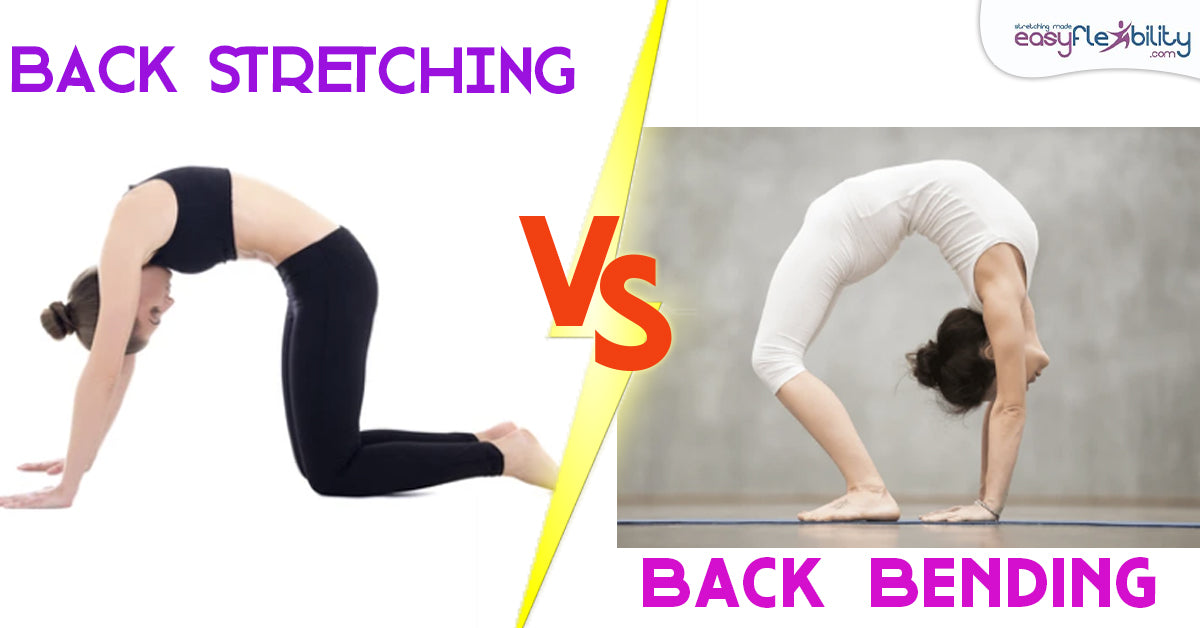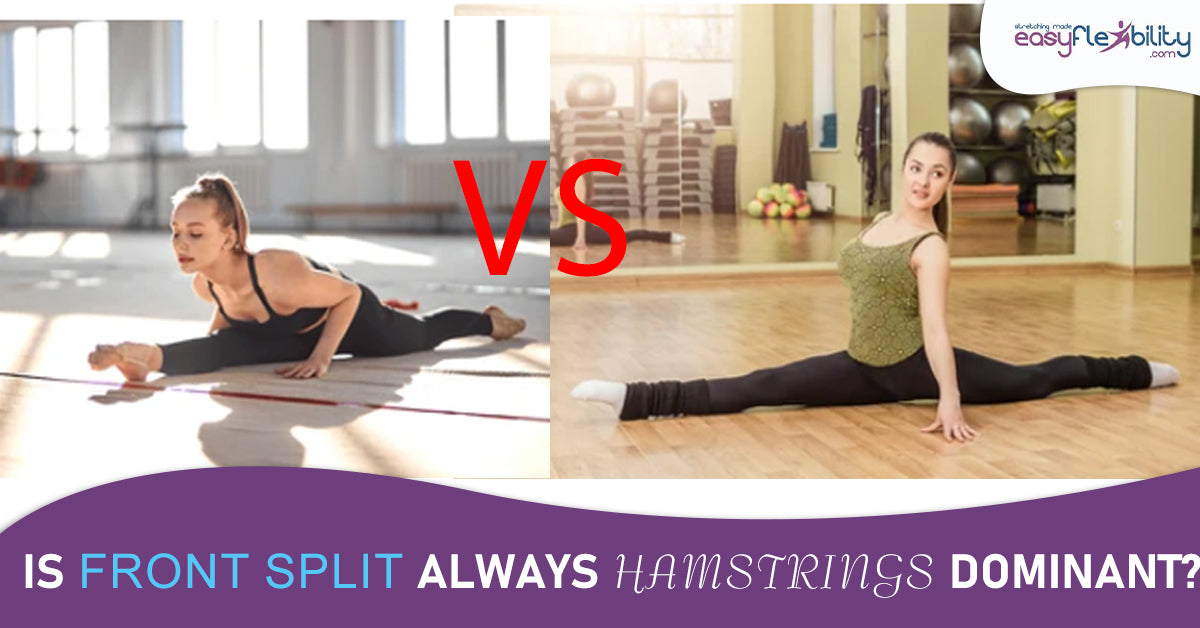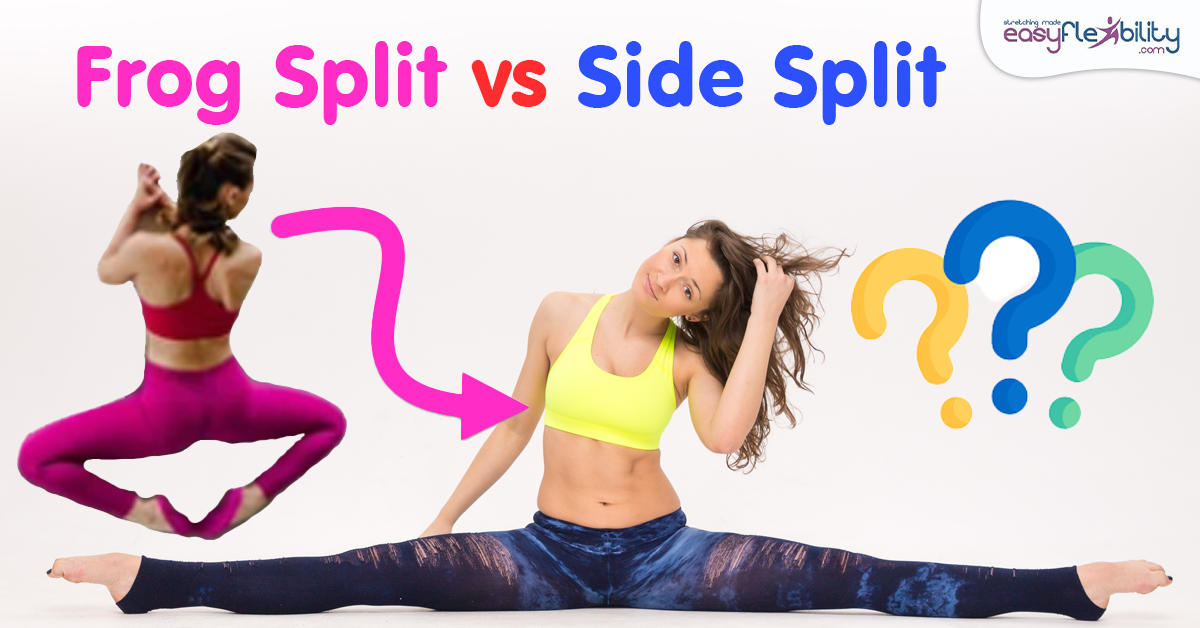Isometric Stretching Exercises vs Other Types of Stretching Exercises
Posted by Paul Zaichik on

What is isometric stretching?
Isometric stretching is when a contraction of the muscle targeted is combined with a static stretch. For example, you place your foot on a chair to stretch your hamstrings. When you feel the stretch in your hamstrings, you contract the hamstring asymmetrically. Asymmetrically means without moving. By pressing your heel into the chair, this would be an isometric hamstring stretch.
Another example, of an isometric stretch, a quadriceps stretch would be to lift your foot in standing or lying down position. Grab your foot with your hand. And from that position, contract your quadriceps.
Another example, of an isometric stretch, a quadriceps stretch would be to lift your foot in standing or lying down position. Grab your foot with your hand. And from that position, contract your quadriceps.
What is the purpose of isometric stretching?
The purpose of isometric stretching is twofold. One, to strengthen the muscles in a specific range and two to pacify the stretch reflex.
Important comments about the above two points. If you are doing a contraction without moving, you are strengthening only in that position. So, you're not connecting the strength that you have in other positions to the position that you're doing the contraction in.
For example, in the EasyFlexibility system, we do use isometric stretching for
different purpose, and I'll mention that below. But in developing strength, we
go through full range of motion. This is safer.
An example of full range of motion for strength of the hamstring would be a stiff
legged deadlift. By going through full range of motion you are connecting your
existing strength to the new range. And you do not spend a lot of time in a new
range where you can actually get injured. In just a moment I'll talk about the
injury potential in isometric stretching.
As I mentioned before, by contracting the muscle that is being stretched, the stretch reflex is pacified. If you were to come out of that position, you would not
really be using that component of the stretch reflex. So, what many trainers do is, they will have a client contract a muscle and of course after that, try to stretch it a little bit further. If isometric stretching is done that way, it now transfers into Peripheral Neuromuscular Facilitation or PMF.
Important comments about the above two points. If you are doing a contraction without moving, you are strengthening only in that position. So, you're not connecting the strength that you have in other positions to the position that you're doing the contraction in.
For example, in the EasyFlexibility system, we do use isometric stretching for
different purpose, and I'll mention that below. But in developing strength, we
go through full range of motion. This is safer.
An example of full range of motion for strength of the hamstring would be a stiff
legged deadlift. By going through full range of motion you are connecting your
existing strength to the new range. And you do not spend a lot of time in a new
range where you can actually get injured. In just a moment I'll talk about the
injury potential in isometric stretching.
As I mentioned before, by contracting the muscle that is being stretched, the stretch reflex is pacified. If you were to come out of that position, you would not
really be using that component of the stretch reflex. So, what many trainers do is, they will have a client contract a muscle and of course after that, try to stretch it a little bit further. If isometric stretching is done that way, it now transfers into Peripheral Neuromuscular Facilitation or PMF.
Hamstrings Flexibility Combo
Hamstrings Flexibility is easy to develop if you are doing it properly. And very difficult to develop if you are not. There are several reasons for this. One being, the fact, that hamstrings stretching is not a one linear type of stretch that fits all the needs of people looking for hamstring flexibility. Try our Hamstrings Flexibility Combo. You can select any of the levels that suit your needs or you may be interested in getting all our hamstrings programs.
The injury potential for isometric stretching depends on several factors.
Factor one how warmed up the muscle is. The warmup is an important component
regardless which way you decide to stretch. Number two previous injury.
If you had an injury in the muscle you're stretching and enjoying it moving. But
it has not been completely healed and rehabilitated the risk of injury is higher. The distance between the sessions is an important factor as well. If you are still sore or not completely recovered from the previous session, your chances of getting injured are higher again. And this applies to other types of stretching as well.
Next is how conditioned a muscle is in its normal range. In other words, if the
muscle is not strong in its regular movement range and you try to contract it
while it's being stretched chances of injury again increase.
And finally, what is happening with a joint and which joint is being targeted. If
you are moving your hip joint and the focus is on a hamstring with a straight knee, your chances of injury to the joint itself is less than if you focus in on the quadricep and you're trying to contract your quadricep while the knee is completely flexed.
regardless which way you decide to stretch. Number two previous injury.
If you had an injury in the muscle you're stretching and enjoying it moving. But
it has not been completely healed and rehabilitated the risk of injury is higher. The distance between the sessions is an important factor as well. If you are still sore or not completely recovered from the previous session, your chances of getting injured are higher again. And this applies to other types of stretching as well.
Next is how conditioned a muscle is in its normal range. In other words, if the
muscle is not strong in its regular movement range and you try to contract it
while it's being stretched chances of injury again increase.
And finally, what is happening with a joint and which joint is being targeted. If
you are moving your hip joint and the focus is on a hamstring with a straight knee, your chances of injury to the joint itself is less than if you focus in on the quadricep and you're trying to contract your quadricep while the knee is completely flexed.
How to minimize injury during isometric stretching
My suggestions on how to minimize your injury if you decide to work on isometric
stretching techniques in your passive stretches. In the EasyFlexibility system primarily when we do use isometric stretching, it is to initiate the Leverage and give more range of motion to the Leverage. And we do that only in positions when the joints are protected.
However, if you are doing isometric stretching and applying it to regular stretching
techniques, not Zaichik Stretching Techniques, but regular stretching. To avoid injuries while doing isometric stretching, the advice is very simple: Go slow. Build up slow. Contracting a muscle is contracting a muscle, regardless if it is in a stretch position or not in a stretch position.
You need a specific warmup, so do a partial contraction first. Maybe. 25% of full force. Take a break. Repeat. Don't go with full force. See what happens over the next few days. See if you are sore by the time your next training session rolls around. If you are not sore and feel fine, you can do 25% contraction in the next session several times, followed by 50% contraction. If you are feeling good do 25, 50, 75% contraction for a few more sessions. And finally, go to 100% contraction again after warming up with 25, 50 and 75%. And when you do 100% contraction, do it for a few seconds. Take a break and then start to build up the time.
I do have to say that I have been in stretching field for a long time and I have seen people who have little experience in stretching and in different modalities of stretching make a lot of brutal mistakes which causes whomever they are training severe injuries. Most of the time these "trainers" will have their client or partner or friend lie down on the floor and have them contract the muscle without proper warmup. Without proper conditioning. With full force for long period of time. Of course, this is a recipe for an injury.
stretching techniques in your passive stretches. In the EasyFlexibility system primarily when we do use isometric stretching, it is to initiate the Leverage and give more range of motion to the Leverage. And we do that only in positions when the joints are protected.
However, if you are doing isometric stretching and applying it to regular stretching
techniques, not Zaichik Stretching Techniques, but regular stretching. To avoid injuries while doing isometric stretching, the advice is very simple: Go slow. Build up slow. Contracting a muscle is contracting a muscle, regardless if it is in a stretch position or not in a stretch position.
You need a specific warmup, so do a partial contraction first. Maybe. 25% of full force. Take a break. Repeat. Don't go with full force. See what happens over the next few days. See if you are sore by the time your next training session rolls around. If you are not sore and feel fine, you can do 25% contraction in the next session several times, followed by 50% contraction. If you are feeling good do 25, 50, 75% contraction for a few more sessions. And finally, go to 100% contraction again after warming up with 25, 50 and 75%. And when you do 100% contraction, do it for a few seconds. Take a break and then start to build up the time.
I do have to say that I have been in stretching field for a long time and I have seen people who have little experience in stretching and in different modalities of stretching make a lot of brutal mistakes which causes whomever they are training severe injuries. Most of the time these "trainers" will have their client or partner or friend lie down on the floor and have them contract the muscle without proper warmup. Without proper conditioning. With full force for long period of time. Of course, this is a recipe for an injury.
Side (Middle) Split Strength & Flexibility Training at Home
COMPLETE COMBO - ALL 3 LEVELS - BEGINNER, INTERMEDIATE, ADVANCED
If you want a proven, safe, easy to understand and do training program based on science, that is guaranteed to get you that perfect 180 Degree Split, then register for this course and start your training today!
This Online On Demand Video Training Combo Contains:
This Online On Demand Video Training Combo Contains:
- Side Splits Beginner Level program
- Side Splits Intermediate level program
- Side Splits Advanced Level program
Isometric stretching vs stretching.
What is the difference between isometric stretching and other types of stretching. What this question is really asking is should you do a passive stretch, contract a muscle, get out of that stretch and repeat that without doing a second stretch after the contraction? For example, let's say you put your foot on a chair, you contract your foot into the chair, squeeze your hamstring. Should you stretch again right after that contraction? Should you not?
A large part of the answer is how conditioned you are and how healthy are your muscles and joints. If you do a stretch right after and you do it properly, you will see a little bit of a shift. In other words, if you will do a PNF type stretch and you don't stretch after, you're not going to see that shift ex. (this study). And a lot of people get that "high" by seeing the increase in their flexibility. But if you're not well trained, not well warmed up, not well conditioned during that stretch after the contraction, even though in theory you have facilitated the muscle to relax, you might push or pull a little bit further than you should and cause an injury. So, it's very important not to be greedy with your range of motion and allow more attempts with little increments, as opposed to one attempt with large increment.
The same applies to Zaichik Stretching Techniques as well. I recommend small steps that add up. In other words, someone may do Leverage-Target and see a progress in their stretch right away. Do another Leverage-Target, then another
Leverage-Target and see even more progress. When this happens most students get greedy and try to do too many Leverage-Target pairs right away because it feels so good to see yourself get flexible. But it's best not to do that. It's best to take a break and repeat again. If the program calls for it do the supporting exercises in between. And see the increments little by little. To have patience. So if you are well conditioned, well warmed up and you have patience, you may go for PNF instead of just isometric stretching.
A large part of the answer is how conditioned you are and how healthy are your muscles and joints. If you do a stretch right after and you do it properly, you will see a little bit of a shift. In other words, if you will do a PNF type stretch and you don't stretch after, you're not going to see that shift ex. (this study). And a lot of people get that "high" by seeing the increase in their flexibility. But if you're not well trained, not well warmed up, not well conditioned during that stretch after the contraction, even though in theory you have facilitated the muscle to relax, you might push or pull a little bit further than you should and cause an injury. So, it's very important not to be greedy with your range of motion and allow more attempts with little increments, as opposed to one attempt with large increment.
The same applies to Zaichik Stretching Techniques as well. I recommend small steps that add up. In other words, someone may do Leverage-Target and see a progress in their stretch right away. Do another Leverage-Target, then another
Leverage-Target and see even more progress. When this happens most students get greedy and try to do too many Leverage-Target pairs right away because it feels so good to see yourself get flexible. But it's best not to do that. It's best to take a break and repeat again. If the program calls for it do the supporting exercises in between. And see the increments little by little. To have patience. So if you are well conditioned, well warmed up and you have patience, you may go for PNF instead of just isometric stretching.
Isometric stretching vs Zaichik Stretching Techniques
As I said before, sometimes isometric contractions are used on top of Zaichik Stretching Techniques if there is not a lot of movement in the Leverage. Because, you have to get movement in Leverage to get movement in the Target.
However, isometric stretching techniques usually focus on a directional stretch or anatomic movement, such as flexion of the hip, extension of the hip, lateral rotation of the hip, extension of the spine and so on. Which means that a lot of muscles would be targeted at the same time and Zaichik Stretching Techniques is designed isolate the muscles. So one muscle or sometimes a related small group of muscles are targeted at the same time. Making stretching that much easier and assuring faster results.
However, isometric stretching techniques usually focus on a directional stretch or anatomic movement, such as flexion of the hip, extension of the hip, lateral rotation of the hip, extension of the spine and so on. Which means that a lot of muscles would be targeted at the same time and Zaichik Stretching Techniques is designed isolate the muscles. So one muscle or sometimes a related small group of muscles are targeted at the same time. Making stretching that much easier and assuring faster results.
You can try a Hamstrings Zaichik Stretching Technique called ~Peace~ right now!
Isometric stretching vs reciprocal inhibition stretching.
If you are familiar with the EasyFlexibility system, you know what reciprocal inhibition stretching is. If not, in simple terms, it is contracting of antagonist of the muscle you're trying to stretch.
For example, if you are working on your hamstrings an isometric stretching for the
hamstring would be, contracting of the hamstrings. But, if you are working on the hamstring and you are doing reciprocal inhibition stretching, then you will contract the opposite muscles or antagonist muscles. In this case it would be the quadriceps, hip flexors, depending on a position adductors and even the dorsi flexors of the foot (if you want your foot pointed or pulled up) in some instances.
It is easy to use an isometric stretching technique or reciprocal inhibition. You can pick one or the other. As is the case with the hamstrings, where the foot is on a chair. Here if you contract the foot into the chair you will be doing the isometric stretch. If you lift the foot, you will be doing reciprocal inhibition.
But in some cases, it is difficult to use one or the other. Cobra is an example of
that. And thus, if you're working on a cobra, you can contract the muscles targeted. But it's not easy to do. While doing reciprocal inhibition is quite a bit easier. And of course, in some instances, isometric contraction would be easier to do than the reciprocal inhibition. So, knowing how to do both helps. And how EasyFlexibility system is different from other systems of stretching. For more information about our programs please click here
For example, if you are working on your hamstrings an isometric stretching for the
hamstring would be, contracting of the hamstrings. But, if you are working on the hamstring and you are doing reciprocal inhibition stretching, then you will contract the opposite muscles or antagonist muscles. In this case it would be the quadriceps, hip flexors, depending on a position adductors and even the dorsi flexors of the foot (if you want your foot pointed or pulled up) in some instances.
It is easy to use an isometric stretching technique or reciprocal inhibition. You can pick one or the other. As is the case with the hamstrings, where the foot is on a chair. Here if you contract the foot into the chair you will be doing the isometric stretch. If you lift the foot, you will be doing reciprocal inhibition.
But in some cases, it is difficult to use one or the other. Cobra is an example of
that. And thus, if you're working on a cobra, you can contract the muscles targeted. But it's not easy to do. While doing reciprocal inhibition is quite a bit easier. And of course, in some instances, isometric contraction would be easier to do than the reciprocal inhibition. So, knowing how to do both helps. And how EasyFlexibility system is different from other systems of stretching. For more information about our programs please click here

About the Author:
Paul Zaichik is an Exercise Science Expert, author of multitude of books, and the creator of Zaichik Stretching Technique (formely known as Kinesiological Stretching Technique). His speciality is flexibility training as well as body weight conditioning. His innovative method is designed to have maximum carry over into specific athletic techniques. Paul is the author of books and DVD’s on the topic of flexibility, martial arts and bodyweight training. Over the years, Paul Zaichik has worked with a variety of individuals including athletes, entertainers, and military personnel. His ElasticSteel Method of Athletic Conditioning programs, EasyFlexibility Programs and Zaichik Stretching Techniques are used world wide by both professional and amateurs with great success.
© ElasticSteel Corp., EasyFlexibility, Paul Zaichik, et. El., 2022. No part of the materials available through ElasticSteel.com, EasyFlexiiblity.com, site may be copied, photocopied, reproduced, translated or reduced to any electronic medium or machine-readable form, in whole or in part, without prior written consent of Paul Zaichik EasyFlexibility.com, Elasticsteel.com.. Any other reproduction in any form without the permission of Paul Zaichik EasyFlexibility.com, Elasticsteel.com is prohibited. All materials contained on this site are protected by United States copyright law and may not be reproduced, distributed, transmitted, displayed, published or broadcast without the prior written permission of Paul Zaichik, EasyFlexibility.com, Elasticsteel.com.
Share this post
- 0 comment
- Tags: Adductors, Ballet, body weight training, Dance, easyflexibility, fitness, flexibility, Hamstring Flexibility, how long does it take to learn the splits, how to get flexible fast, lateral hamstrings, side split stretches, Training Flexibility
0 comment








